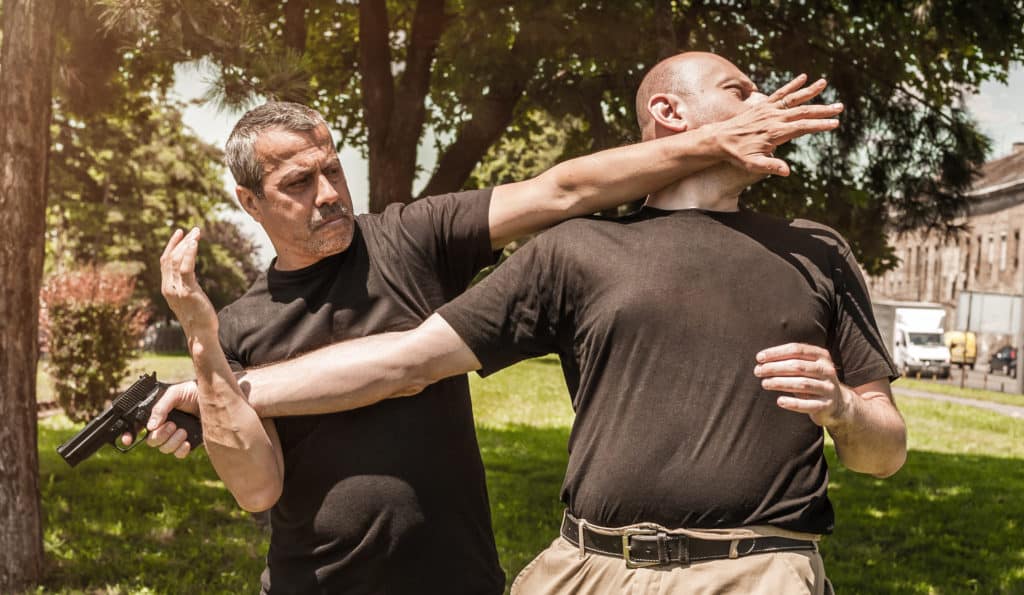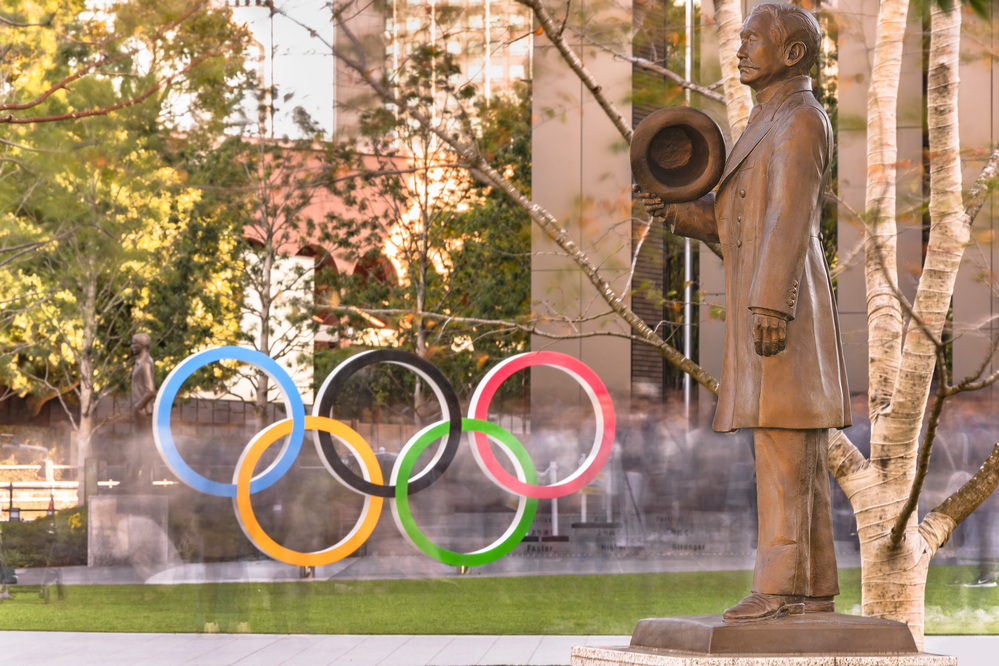In this post we will go in depth on Krav Maga compared to other martial arts and how they stack up when it comes to:
- fighting philosophy/strategy
- training and practice
- self defense
- competition
But first lets take a brief look at the history and development of Krav Maga as this will help to understand better the main fighting philosophies as well as application and training of Krav Maga.
Krav Maga: A Brief Overview
Krav Maga is a highly effective and practical self-defense and hand-to-hand combat system that originated in Israel.
Krav Maga was developed and refined primarily for the Israel Defense Forces (IDF) and Israeli security forces but has since gained popularity worldwide as a civilian self-defense system.
The term “Krav Maga” in Hebrew means “contact combat” or “close combat.”
The fighting system was developed by Imi Lichtenfeld, who combined his knowledge of street-fighting and martial arts with his experience as a boxer and wrestler, as well as his background in Judo and Jiu-Jitsu.
The system emphasizes simplicity, efficiency, and instinctive movements to neutralize threats and attackers in real-life situations.
Krav Maga compared to other martial arts:
So when discussing the history and development of Krav Maga above, one can already see that Krav Maga is quite difference when compared to other martial arts, especially the most established and well known martial arts in the world today.
So let’s look at the main differences when it comes to Krav Maga compared to other martial arts:
1. The Most Popular Martial Arts Today have a Long History
The most popular martial arts in the world today can be traced back into history of a 100 years plus.
And for some martial arts styles, their history dates back more than a hundred years.
Krav Maga on the other hand is relatively new and more recent in terms of development.
The origins of Karate can be traced back hundreds of years to the island of Okinawa, Japan.
The roots of Karate go back several centuries even though the formalization and widespread recognition of Karate as a distinct martial art primarily occurred in the 20th century.
Muay Thai can be traced back to the 16th century during the Ayutthaya Kingdom (1351-1767) in what is now modern-day Thailand.

During this period, the martial art was practiced by the military and was used in warfare.
Over time, it also became a popular spectator sport and was incorporated into various festivals and events.
The sport continued to evolve during the subsequent Rattanakosin Kingdom (1782-present), where it gained even more popularity and formalization.
Rules and regulations were introduced to make it safer for participants and spectators alike.
Krav Maga, the Israeli self-defense system, is relatively younger compared to some other traditional martial arts.
It was developed in the 1930s and 1940s by Imi Lichtenfeld, a Hungarian-Israeli martial artist and boxer.
2. Krav Maga does not have Competitive matches
Traditionally, Krav Maga was primarily designed as a practical self-defense and hand-to-hand combat system, rather than a sport or competitive martial art.
Its main focus is on real-life scenarios and effectively neutralizing threats in self-defense situations.
Therefore, the core training in Krav Maga emphasizes practical techniques and strategies that can be used to protect oneself or others in real-world encounters.

While some practitioners and schools may explore the idea of competitions as a way to test their skills and techniques under controlled conditions, the core essence of Krav Maga remains focused on practicality, effectiveness, and self-defense.
As such, many Krav Maga schools continue to prioritize realistic training scenarios and stress drills rather than formalized competitions.
The most popular martial arts in the world today each have competitions and the most popular combat styles are actually part of the Olympic games such as:
- Judo
- Boxing
- Taekwondo
- Wrestling
- Fencing
3. Krav Maga is a Combination of Martial Arts
Krav Maga combines elements from various martial arts and combat systems, making it an eclectic and comprehensive self-defense system.
Its founder, Imi Lichtenfeld, drew from his background in boxing, wrestling, Judo, Jiu-Jitsu, and other martial arts, as well as his real-life experiences as a street fighter and self-defense instructor.
The development of Krav Maga involved incorporating techniques and principles that proved to be effective in real-world situations.
It adapted and integrated various elements from different martial arts, focusing on simplicity, efficiency, and practicality.
Here are some of the martial arts and combat systems that have influenced Krav Maga:
- Boxing: Krav Maga incorporates punching techniques from boxing, emphasizing powerful strikes to vulnerable areas of an attacker’s body.
- Wrestling: Wrestling techniques are utilized for clinch work, takedowns, and escapes from grabs or holds.
- Judo and Jiu-Jitsu: Krav Maga includes some grappling techniques, joint locks, and submissions from these arts for close-quarters combat.
- Karate and other striking arts: Krav Maga integrates kicks, knee strikes, and elbow strikes from various striking martial arts.
- Aikido: Some principles of redirecting an opponent’s force and using their momentum against them have been adapted from Aikido.
- Military combatives: Imi Lichtenfeld incorporated elements from military close combat and bayonet training to enhance Krav Maga’s effectiveness in armed encounters.
By drawing from these various sources, Krav Maga aims to provide a well-rounded and practical self-defense system that works in real-life scenarios, regardless of the type of threat or the number of attackers.
4. 100% Focus on Self Defense and Real World Combat
Unlike the most popular martial arts in the world today such as Taekwondo, Judo, BJJ and Karate; Krav Maga is purely focussed on self defense.
The systems of martial arts that are most popular today focus primarily on competition and producing competitive fighters and competition focussed Kata and tricks.
This is especially so for martial arts like Judo where competition is pretty much 100% of the focus in training.
As discussed above Krav Maga really has no competitions and regulating bodies to set rules for competition as real world combat is the main focus.
5. Dealing with Multiple Attackers/Weapons
Pretty much all of the most popular martial arts styles in the world today are focussed on dealing with a single opponent who is unarmed.
Whether it be striking competition such as in Boxing, Judo or Taekwondo; grappling such as in Wrestling and BJJ or even combination/’mixed’ competitions, the focus is on a single unarmed oponent.
As Krav Maga is focussed on real world combat and unpredictable situations that a Krav Maga practitioner is trained to adapt to, multiple attackers and weapons self defense are key components of Krav Maga compared to other martial arts styles.

Similarities: Krav Maga Compared to other Martial Arts
Now that we have discussed some of the main differences between Krav Maga and other fighting styles, let’s discuss some of the similarities.
Promotion of Ethical and moral values
While not as central as in some traditional martial arts, Krav Maga does often emphasize values such as discipline, respect, and responsibility. These values contribute to building a strong and responsible character in practitioners.
Ranking system
Although not present in all Krav Maga schools, some do use a belt or patch system to indicate levels of proficiency and rank among students. This is similar to traditional martial arts’ belt ranking system, although it is generally simpler and less focused on formality.
Focus on personal development
Like traditional martial arts, Krav Maga encourages personal growth and self-improvement beyond physical skills. It promotes self-confidence, mental resilience, and the ability to remain calm and focused under stress.
Instructor-student relationship
Krav Maga, like traditional martial arts, often follows a structured instructor-student relationship, with instructors providing guidance and mentoring to their students.
Physical training
Like traditional martial arts, Krav Maga involves rigorous physical training to develop strength, flexibility, endurance, and coordination. Practitioners engage in various drills and exercises to improve their techniques and overall fitness.
Techniques and principles
While Krav Maga emphasizes practical self-defense, it still incorporates techniques for striking, kicking, blocking, and grappling. Many of these techniques are similar to those found in traditional martial arts, as they are derived from martial arts like boxing, wrestling, Judo, and Jiu-Jitsu.


